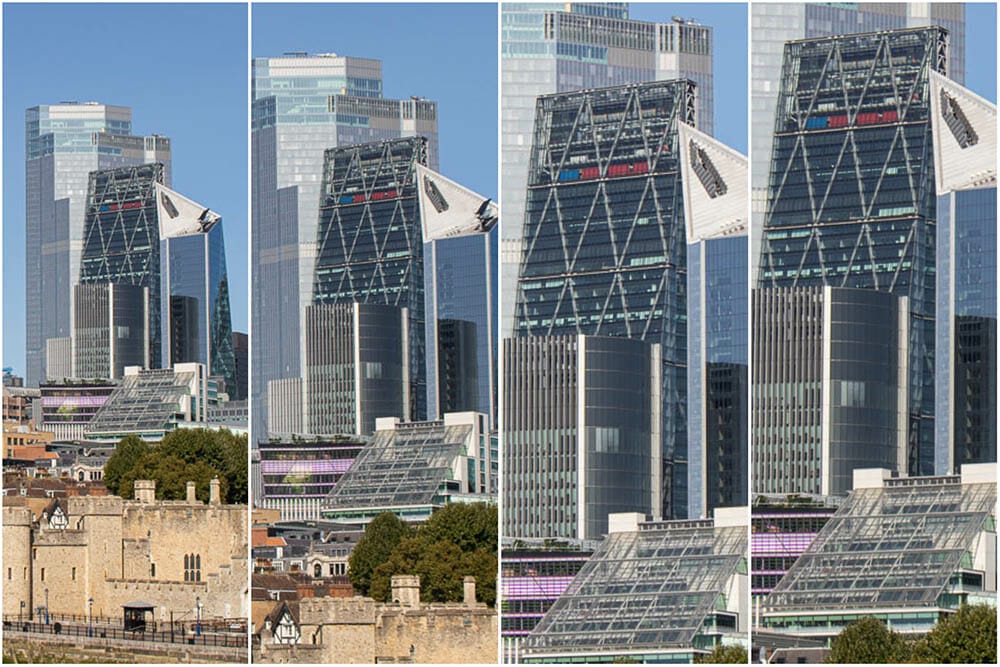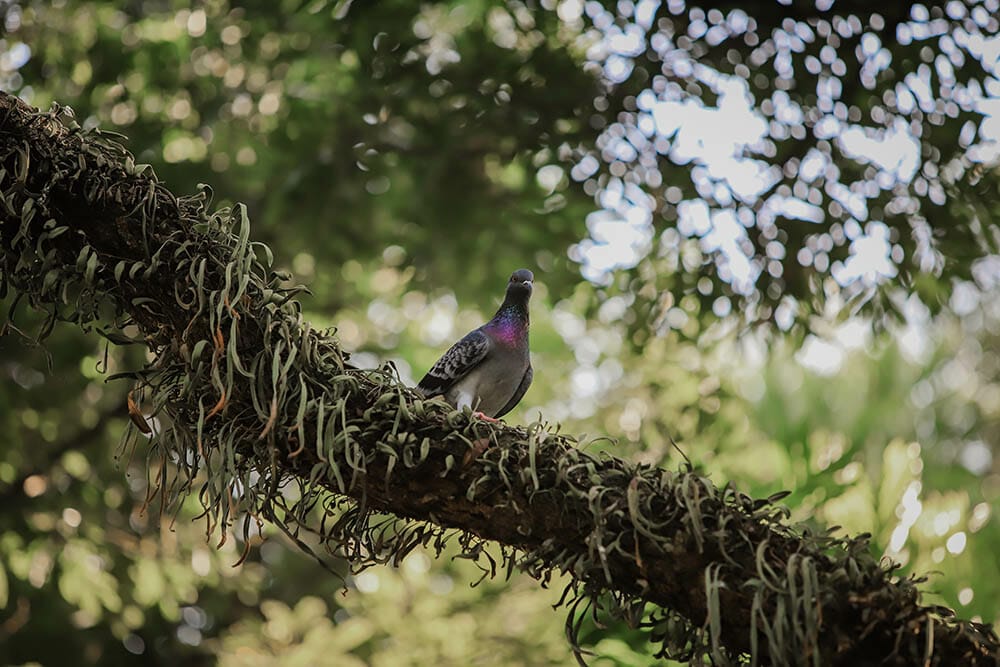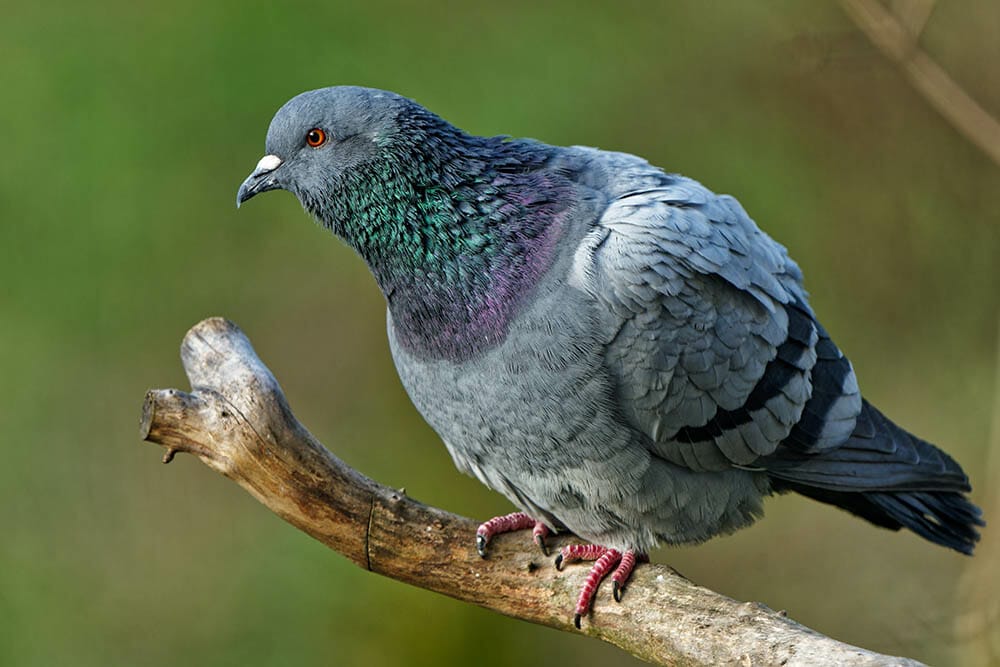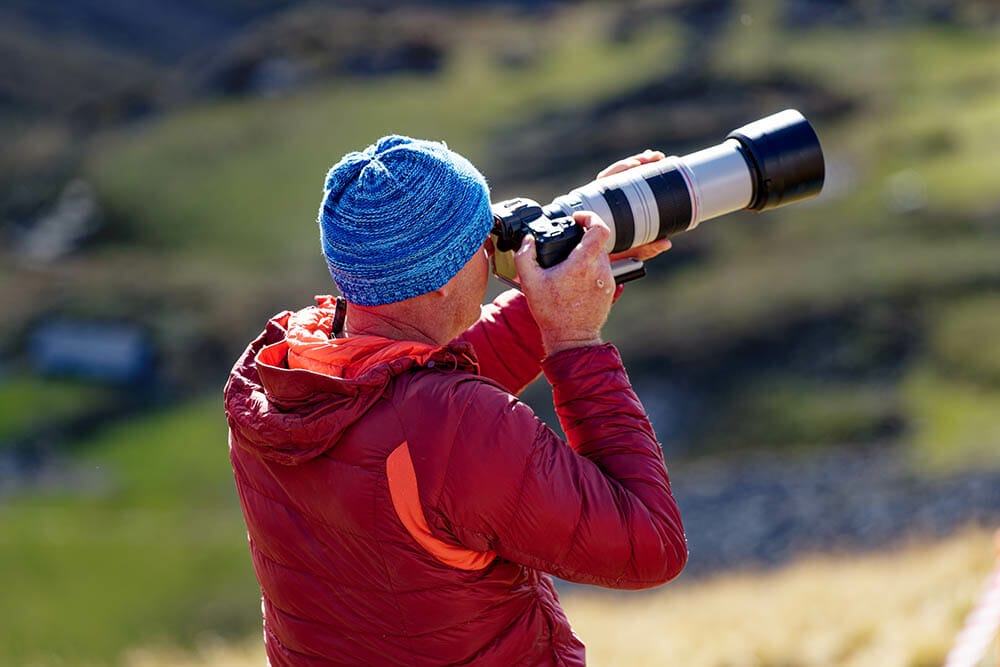You’ll probably be familiar with photos where the backgrounds look really blurred and the subject nice and sharp. It creates a separation between foreground and background – but how is it achieved? With a shallow depth of field, I hear you say – yes!
But did you know you could capture shots with the same look using ANY aperture size? All you need to do is use a lens with a longer focal length to achieve what photographers call lens compression. I’ll explain what lens compression is, what equipment you’ll need and how to compose your shots.

Lens compression is the idea that when you use a telephoto lens (focal lengths above 100mm) anything in the background will appear larger and compressed closer to the foreground.
As you move the camera further away from your subject, you will usually zoom back in on your subject to make it larger in the frame.
The background elements appear larger than they actually are – hence the scene becomes “distorted” since the background appears closer and larger than it is in real life.
Lens compression can be a very useful way of isolating a subject in a scene while using a smaller aperture size (ie. F/11) because the effect of compression comes from a combination of focal length and the subject’s distance to the background.

Image: As you zoom in to your shot compression of the background becomes more noticeable.
Depth of field, which determines how much of your photograph is in focus, is controlled by 3 elements – aperture size, focal length and distance to background. In the case of compression, only focal length and the distance between elements really matter.
Using lenses with short focal lengths won’t show off compression as much, but by moving the distance between the camera, subject and background you can easily create compression.
Creating a bigger gap between the subject and background gives you a better chance of a blurred background. To do this you can either move your subject closer to the camera (i.e if you’re taking a portrait of your friend) or move the camera closer to the subject (if the subject can’t move itself).
Reducing the gap between camera and subject means that the relative distance between subject and background is bigger, therefore there’s more likely chance for the background to be out of focus.

Image: Shot at 35mm

Image: Shot at 250mm
But the lens compression effect isn’t just about the depth of field it also makes the background appear closer. And you’ll need specific types of lenses for that effect to appear.
Longer focal lengths compression scenes are better than shorter focal lengths. Shoot with focal lengths above 100mm to see the effect of compression clearly. The longer the focal length the easier compression will be to achieve.
Whether you’re shooting with a prime telephoto lens or a wide-ranging zoom lens makes no difference, just as long as it’s a longer focal length.
This may mean you’ll have to be further away from your subject to achieve focus, but judge this on a case-by-case basis.
Generally speaking, prime lenses carry better-quality glass optics meaning the background blur will be smoother. But if you’re a beginner photographer wanting to try out lens compression photos stick to the longest lens you’ve got for now.

Lens compression in photography can be used in a number of creative ways. Shooting spectacular moon rises and sunsets are just two ideas that landscape photographers find to effectively capture shots of very distant objects making them appear closer.
Portrait photographers also utilise lens compression when the background of their scene is busy and would otherwise cause distraction. It can be very useful to isolate a subject when either the background isn’t important to the story of the subject or if you need to make the element in the background appear larger.
Bookmark and save this article about lens compression so you can find it again in the future. If you’ve got any other questions about photography chances are you’ll find the answers in our other articles and tutorials below.
Shooting sunsets using amazing 5-in-1 magnetic lens filters from Kentfaith, the 1st choice for photo & video products.
Popular memory cards for photography – what’s the best SD card for your digital camera? Choose the right capacity and class speed in our guide
Discover the BEST way on how to clean a camera sensor using swaps, rocket blowers and pencil brushes to give your shots a dust-free finish!
Learn the basics of photography – fast – with our FREE 60-Second Photographer online course. Each class is short and sharp with simple, actionable steps that give you immediate results.
x 30 lessons

© iPhotography™
Become a confident and competent photographer in less than 30 minutes!
Before you leave, make sure you’ve secured your FREE online photography course (worth £29.99)
Each class is just 60-seconds or less making it the fastest and easiest way to learn photography!